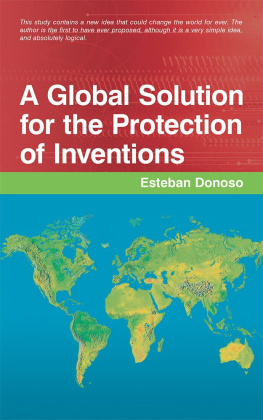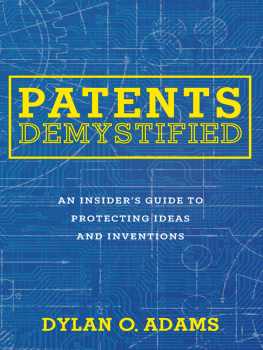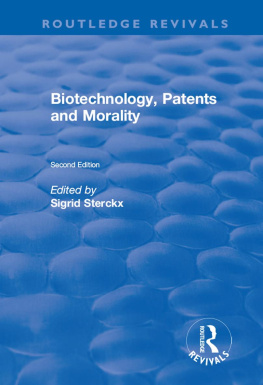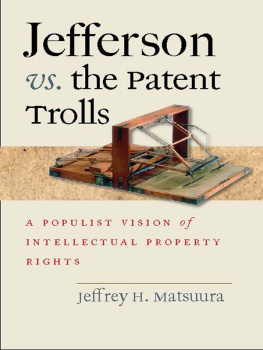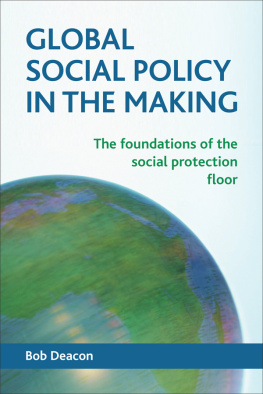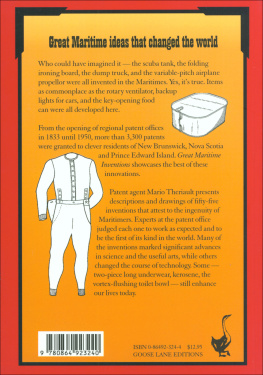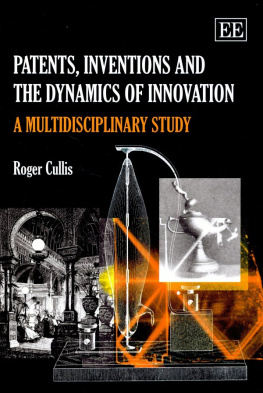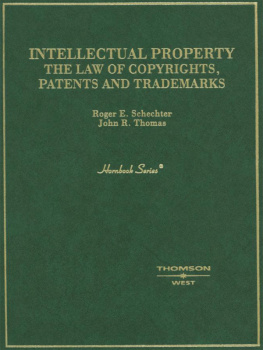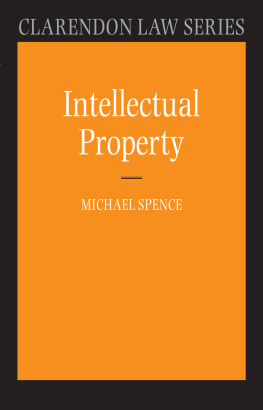A Global Solution for the
PROTECTION OF
INVENTIONS
Esteban Donoso

Copyright 2013 Esteban Donoso.
All rights reserved. No part of this book may be used or reproduced by any means, graphic, electronic, or mechanical, including photocopying, recording, taping or by any information storage retrieval system without the written permission of the publisher except in the case of brief quotations embodied in critical articles and reviews.
Archway Publishing books may be ordered through booksellers or by contacting:
Archway Publishing
1663 Liberty Drive
Bloomington, IN 47403
www.archwaypublishing.com
1-(888)-242-5904
Because of the dynamic nature of the Internet, any web addresses or links contained in this book may have changed since publication and may no longer be valid. The views expressed in this work are solely those of the author and do not necessarily reflect the views of the publisher, and the publisher hereby disclaims any responsibility for them.
Unless otherwise noted, all translations were made by the author.
Any people depicted in stock imagery provided by Thinkstock are models, and such images are being used for illustrative purposes only.
Certain stock imagery Thinkstock.
ISBN: 978-1-4808-0415-9 (sc)
ISBN: 978-1-4808-0416-6 (e)
Library of Congress Control Number: 2013921199
Archway Publishing rev. date: 04/07/14
This book is dedicated to my wife Lo rena.
This is an augmented and corrected version of the book Correctivo a la proteccin mundial de las invensiones. The translation was made in collaboration with Carolina Donoso. I want to thank my sister Carolina who helped me enormously with intellectual and linguistic contributions to this book and the cause it raises. Thank you for your pati ence.
Contents
T he an alysis in this study is developed based upon a triple validation scrutiny of the examined regulation, intending to unravel the justice, validity, and effectiveness (aspects subsequently interconnected when determining the optimal incidence of a regulation on society) of the international patent legal system. Obviously this study acknowledges the existence of other appropriate terminology to identify this methodo logy.
Likewise, each of the criterions used for this three-dimensional analysis of rules (justice, validity, and effectiveness), has been referred to by various authors who have addressed the subject with different names. Thus, the criterion related to justice has been referred to as axiological aspect, recta ratio , deontic aspect, and value theory, among other terms. In the present study this aspect will be referred to with expressions like axiological, justice, justness, fairness, or righteousness, while recognizing the existence of other appropriate terminology to identify it. In the same way, the criteria that in this study is referred to as validity of the regulation, is often referred with terms like ontological aspect or others. Finally the term effectiveness , which is used throughout this study, can be identified in other publications with expressions like sociological, factual or legal reality element, and phenomenological problem, among ot hers.
This study rests on the philosophy discussed briefly in this concept note, but it is not intended to delve into a thorough analysis of it. Finally, because of its illustrative qualities, a graphical approach to the ultimate goal of legal trialism is presented next. In it, each of the aspects is represented with circles (validity, effectiveness, and justice), and therefore the regulation with an optimal impact on society (the one that is at the same time just, valid, and effective) is graphically identified in the space where the three circles superpose simultaneo usly:
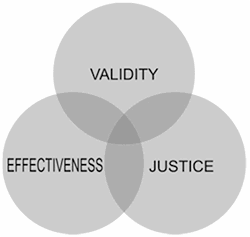
C oncerning intellectual property, more specifically in regard to industrial property and within it the protection of inventions, at the current international scenario there is an issue that has polarized humanity, forming two different groups of opinion that are distinguishable by their different economic conditions. The proposal contained in this document aims to bring these two opposing views closer toge ther.
With this goal in mind, this study has been divided into two segments. In the first segment (which is also the first chapter) the malleable legal nature of intellectual property, of industrial property, and of patents is briefly analyzed. In this first chapter the evolution and background of the current global legal scenario of the protection of inventions is also reviewed, while the main flaws, strengths, and virtues that can be recognized in it are preliminarily identified. In the second segmentcorresponding to the second chapterthe product of the previously mentioned evolution (the international instrument governing the matter) is examined, and the introduction of a corrective is proposed therein. The proposed corrective is based on the insertion of proportionality regarding the contribution of each country or region to the worlds technological development, which is measured in years of exclusivity. Also in this chapter a remark is made in regard to the compatibility of the central proposal of this study, with the principles and objectives of the global agreement governing the matter, such as free trade, technology transfer, the least possible market distortion produced by uneven protection, etc. In this second chapter it is concluded that such an insertion is plausible and possible, and that it would enhance these princip les.
While the analysis is developed in the first and second chapters (especially in the second chapter), the central hypothesis of this publication is proven. It consists in correcting the deficiencies that exist in the current system by introducing a differentiated protection period granted by a patent according to the economic capacity of each country. With this objective in mind, the analysis of the global agreement governing the matter is addressed and studied under the scrutiny of legal trialism. As it was established in the initial concept note, according to this legal philosophy, in order for a given regulation to have an optimally impact in society, it must be at the same time a valid rule (meaning that it is applicable), a just rule (which is the axiological aspect and the ultimate goal of every regulation), and an effective rule (an element that is related to its practical applicat ion).
This book proposes (in its second chapter) an essential or central corrective, which is considered irrefutable and necessary to make the global agreement governing the matter a just and effective scheme, and it also proposes other numerous secondary corrections that derive from it, which are considered relevant only in application of the first mentioned. The main proposed corrective consists of introducingin compliance with the current regulationa differentiated term of protection granted by a patent (the principle of proportionality), taking into account the economic capacity of the different countries. This would have a positive impact on the justice and effectiveness of the regulation. The second chapter also shows that the validity of the agreement governing the matter is imminently universal, concluding along with it that, on the basis of a fairer systemone that will be accomplished upon the introduction of proportionality, the efforts that so far have set this regulation as virtually universal should therefore continue. As the study will show later, the goal of a universal regulation is very close to being fully achi eved.
Next page
